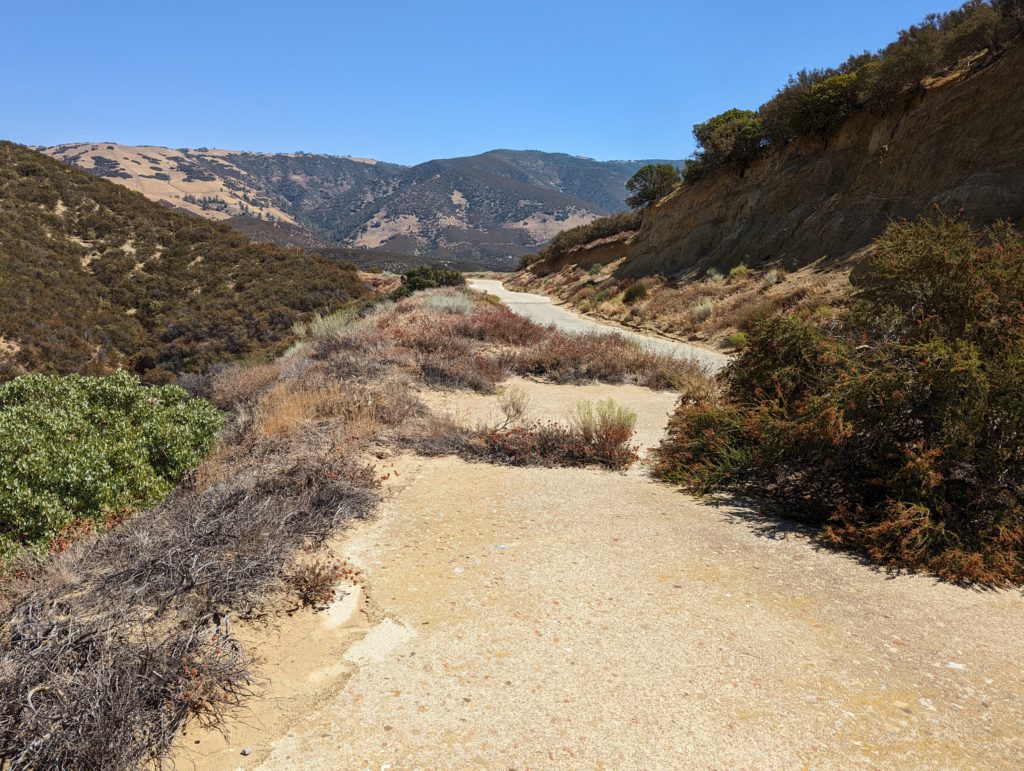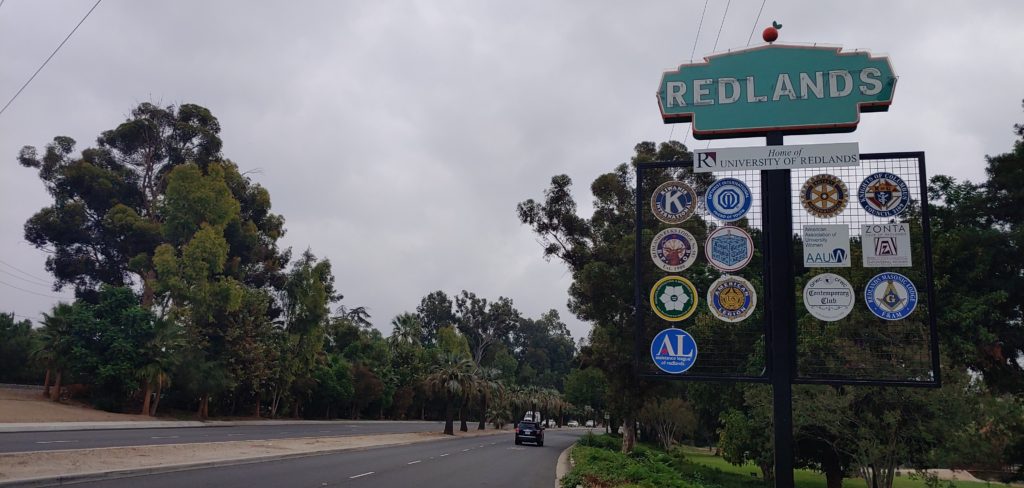The Ridge Route Alternate
by Michael F Ballard

Surveying of the new “Ridge Route Alternate”, as it was to be called, began in 1928. The new alignment of the highway would diverge from the existing Ridge Route at Castaic and head north through the mountains via Violin Summit, Whitaker Summit, Piru Gorge, and Peace Valley rejoining the Ridge Route about one mile south of Gorman. From there, the new alignment would follow a much straighter path through Gorman and Tejon Pass. The old summit at Tejon Pass would be lowered from 4213’ to 4183’. The northern terminus of the “Ridge Route Alternate” was Lebec. The name Ridge Route Alternate came from the fact that the Division of Highways thought that people would still travel the original Ridge Route and use the new road as a faster way to travel. Their idea proved false as traffic completely disappeared from the Ridge Route as soon as the new road opened.
In late 1929, construction began on the new Ridge Route Alternate. The new alignment was built to the latest in highway standards. The new route was 9.6 miles shorter and had only 1/14 the curvature of the original Ridge Route. The Ridge Route Alternate was also much lower and more protected which made it less susceptible to fog, sleet, and snow. Instead of two ten-foot lanes on a 24-foot roadway like the Ridge Route had, the new roadway had three ten-foot lanes on a 38-foot roadway. This however only proved to be just as dangerous as two lanes as the center lane was a common passing lane, more commonly known as a “suicide” lane.
In Piru Gorge, massive cuts and fills had to be constructed. The largest cut, known as the Pyramid Cut, was 206 feet deep, 400 feet long, and required the removal of 230,000 cubic yards of material. This left a landmark along the highway that would outlast the highway itself, Pyramid Rock. In total, over 4.3 million cubic yards were excavated and over 30.2 million station yards of overhaul had to be moved. This is 77 times greater than what was moved in the construction of the Ridge Route back in 1915, just 18 years earlier.
Opening Ceremonies at the “Channel Change”
After more than four long years of work, the Ridge Route Alternate was finally opened to traffic on October 29, 1933. Thousands of people attended the ribbon cutting ceremony at the “Channel Change” in Piru Gorge, a change to Piru Creek that saved the cost of two bridges, which is near the halfway point along the route. Many cars were waiting at each end of the new route for the barriers to be removed, which were simultaneously removed at 10 am. Harry A. Hopkins, Chairman of the California Highway Commission, cut the ribbon and formally accepted the Ridge Route Alternate on behalf of the State of California in the name of Governor Rolph. One of the speakers at the ceremony, State Highway Commissioner Phillip Stanton stated that the completion of the Ridge Route Alternate was “the greatest blow to sectionalism in California since the construction of the original Ridge Route in 1915.” He said this because the new “high speed” route through the mountains would allow faster commerce and travel between Northern and Southern California.
Conversion of US 99 to an Expressway from a Three-Lane Highway
As traffic increased through the late 1930’s and the early 1940’s, the need to upgrade the Ridge Route Alternate became evident. Plans and contracts were ready as early as 1940 but World War II delayed those plans. The Collier-Burns Act of 1947 made more funds available from the gasoline tax to upgrade US 99 to an expressway through California. From 1947 to 1951, the Ridge Route Alternate would finally be widened from three lanes to a four-lane expressway. Work began on the first section, the bottom of Five Mile Grade at Castaic to Frenchman’s Flat, on March 13, 1947. The new, wider 78-foot roadway would consist of four twelve-foot lanes, a six-foot dividing strip, and two nine-foot shoulders. Where the divider had to be narrowed to four feet, raised concrete bars were used in the median to separate each direction of travel. The center divider was at its widest at Big Oak Flat, where an unpaved center dividing strip thirty-six feet wide was built.
Instead of concrete, asphalt was used in the paving of the roadway. The grade and curvature were changed just enough so that the original concrete could not be used. It was paved over in some places and completely torn up in others. There are many places where the original concrete is still visible and is usually found about one to two feet below the level of the current roadway. Construction was finally completed June 9, 1948 on Five Mile Grade, February 24, 1949 on the segment from Violin Summit to Whitaker Summit, September 1, 1948 on the segment from Whitaker Summit to Frenchman’s Flat. Widening work was completed through Peace Valley from Los Alamos Creek to just south of the junction of State Highway 138 on December 8, 1949.
By 1951, almost all of US 99 through the mountains was a four-lane divided expressway. Only three segments remained as a three-lane highway – 5.3 miles in Piru Gorge, 11 miles over Tejon Pass, and 5.1 miles in Castaic. Piru Gorge would be the most expensive and most difficult segment to widen. This section extends from Frenchman’s Flat north to the old Oak Flat Maintenance Station. More than 500,000 station yards were moved in the widening of the Piru Gorge segment. As a part of this project, the two bridges at Pyramid Rock were eliminated to save on costs. Instead of widening the bridges, they were removed and replaced with fill as Piru Creek was realigned through the widened Pyramid Cut. All but three miles of that expressway are under Pyramid Lake.
Even with these improvements, fatality rates along Five Mile Grade due to runaway trucks made a runaway truck ramp necessary. It was constructed about 3.5 miles south of Violin Summit and was opened in August 1956. It would be used many times in its 14-year span. The escape ramp was used for the last time in Mid-January 1970 just before the freeway was completed.
September 2022 Meeting and Presentation
Join us via Zoom on Tuesday, September 13, 2022 at 6 pm for a presentation on the Ridge Route Alternate between Castaic and Tejon Pass by Michael F Ballard. To register for the meeting:
https://us06web.zoom.us/meeting/register/tZIkf-2hrzsiH904SqBi5hu0v6BAHfBEuTSC
City of Redlands – Region 4 Sponsor
I would like to welcome the City of Redlands to our Highway 99 Association. The City of Redlands is our first major sponsor, and we look forward to seeing more in the future. Redlands will also be the first city in San Bernardino County to have Historic US Highway 99 signs posted along its segment. Thanks to their generous donation and application, we can make sure US Highway 99 remains an important part of California history. We hope other cities and organizations follow their lead in the near future.
Remember, When You’re Through Getting Your Kicks on Route 66, Come Wine and Dine on Route 99! There are a lot of good places to do both in Redlands along 99. Come check them out and tell them the Historic Highway 99 Association of California sent you!
Red Bluff Update
The Helen and Joe Chew Foundation, which gave a wonderful presentation in May on the history of the Chinese culture in Red Bluff is looking to raise funds for their cause. If you’d like more information and would like to help, we recommend checking out their website. You can also use the links below to directly contribute. I personally donated $50 toward their Historic Chinatown Signage project. They are a wonderful group with a great cause that needs your support. You can also get a special tour of the area, which is another Highway 99 Adventure, through your membership. Contact us for more details about that benefit.
Donations Link
https://www.redbluffchew.org/donate
Membership and Donations
As we slowly ramp up our efforts to get Historic Route signage placed in various cities and historic locations such as the Pine and Palm, we need your support. You can do this by becoming a member, donating money, or by volunteering with our Association. We are a 501(c)3 non-profit corporation and your donations may be tax deductible. Why not help reduce your tax burden for 2023 by donating prior? We can also use your help with some of our projects, website, and our newsletter. Having someone local to act as our ambassador or liaison would be of great help. We are also working out how to handle renewals for existing members. Initially, we had planned to have all memberships expire at a specific time. At this time, we are looking to have memberships expire at the end of the month initially obtained. Join now and help us grow!
Photo Request
We are working on an article about the town arches along Highway 99 and we need your help. We are seeking photos of the following arches:
- Modesto
- Lodi
- Orland
The photos should show preferably the entire arch. If there is a dedication plaque nearby, we could use help with that as well.
Featured Photo
The Historic 1915 Ridge Route has seen quite a bit of changes since it was first constructed. Among those are the many “curve corrections” which were an effort to reduce the number of sharp curves along the roadway in the mid 1920’s. This particular location was bypassed about 1925, making it nearly 100 years since traffic last passed over it.


